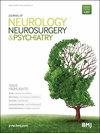ANTIBODIES TO BRAIN AND THEIR RELATION TO DEMYELINIZATION.
引用次数: 3
Abstract
THE occurrence of encephalomyelitis or other neurologic disorders during the Pasteur treatment of rabies has stimulated interest in recent years in the relation of parenteral injections of brain to demyelinization in the nervous system. A short review of the subject is given by Hurst as a preliminary to his own report on an attempt to produce such lesions in rabbits. Hurst (1932) and later Schwentker and Rivers (1934) were unable to demonstrate any changes in the nervous system of rabbits receiving repeated injections of brain. Rivers (1933, 1935) and his co-workers have, however, shown large areas of demyelinization in the cerebrum of eight of sixteen monkeys which had received from 46 to 85 intramuscular injections of brain emulsion and brain extract. They likened the picture to that of Schilder's disease in man, although many eosinophils and unusual giant cells not characteristic of this disease were observed about the areas of myelin destruction. It has been shown by Brandt, Guth, and Muller (1926) and Witebsky and Steinfeld (1928) that brain antibodies are formed in rabbits by the injection of heterologous brain tissue. Schwentker and Rivers report the presence of such antibodies on injection of homologous brain combined with pig serum, vaccine virus, or brain which has undergone autolysis. The suggestion has been made that degenerative diseases may be due to the formation of autogenous antibodies against the tissue affected. Masugi (1932), Smadel (1936), and others have produced glomerulonephritis in animals by reinjecting antikidney serum. The serum was obtained by repeated injections of kidney emulsion of one animal into another. It seemed worthwhile to determine whether a heterologous antibrain serum might not, when reinjected, bring about lesions in the nervous system.脑抗体及其与脱髓鞘的关系。
本文章由计算机程序翻译,如有差异,请以英文原文为准。
求助全文
约1分钟内获得全文
求助全文

 求助内容:
求助内容: 应助结果提醒方式:
应助结果提醒方式:


